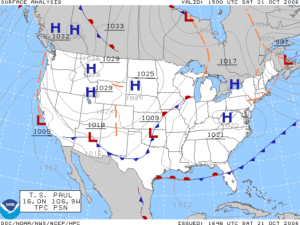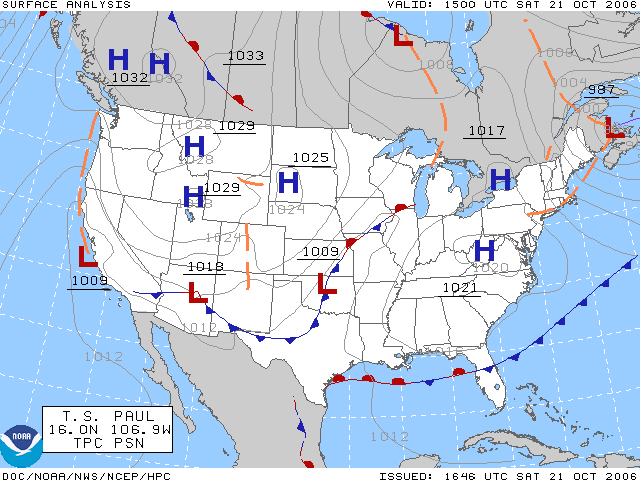 Ocean voyagers have to be aware of many factors when it comes to ocean weather. Among these factors are the various scales at which the atmosphere operates. To the experienced observer, the observation of wave-like characteristics in the atmosphere is second nature. The observer sees the wave-like patterns in the clouds or the pulsating nature of snowfall as simple manifestations of these characteristics.
Ocean voyagers have to be aware of many factors when it comes to ocean weather. Among these factors are the various scales at which the atmosphere operates. To the experienced observer, the observation of wave-like characteristics in the atmosphere is second nature. The observer sees the wave-like patterns in the clouds or the pulsating nature of snowfall as simple manifestations of these characteristics.
The atmosphere exhibits wave-like properties because its essential nature is that of a fluid. And, as with any fluid, waves are produced in the atmosphere when it is disturbed. These waves come in all sizes. Indeed it has become common practice to classify the scales of motion in the atmosphere on the basis of one aspect of their size, their wavelength.
Planetary (Rossby) Waves
Planetary waves, also called Rossby waves, after the meteorologist who developed much of our theoretical understanding of them, are the longest wave types in the atmosphere. Acting over a large area of thousands of miles and with a time scale of a few weeks, these waves control the gross aspects of our weather, i.e. cold/warm spells, droughts, rainy periods, etc. Since they act over such broad space-time scales, the vertical velocities are very small. One may think of this type of waves as being the kind that an astronaut could observe from the International Space Station — a global view of the atmosphere.
Synoptic Waves
Synoptic waves are probably more familiar to the layman because these are the type of waves illustrated on weather maps shown on TV weather. Acting over an area about the size of the continental U.S., and time scales of about a week, these waves can be seen in the movement of “highs” (anticyclones) and “lows” (cyclones). This is the type of wave first noted when we glance at a surface weather map.
Medium Scale
The medium scale represents the spatial and temporal scales of the transition zones between synoptic scale features. Typical examples of medium scale phenomena are frontal zones and short wavelength upper air perturbations. Their features have temporal frequencies of less than a week and wavelengths of approximately 10 kilometers. These features produce the rapid weather changes that often occur during the transition from one synoptic scale weather system to another.
Tropical Waves
These waves are called tropical because they mostly affect low latitude weather. Being smaller than synoptic motions but enduring just as long, they show anincrease in vertical velocity. Also of interest is how the weather becomes more dramatic as we go to smaller scales of motion.
Mesoscale Waves
The most prominent of all mesoscale waves are long gravity waves. These are waves in which buoyancy acts as the restoring force. A common example of a gravity wave is the wave induced on the surface of a lake or pond after one has thrown a pebble into the water. In the atmosphere, mesoscale gravity waves organize areas of precipitation and cloudiness into bands or lines. They are often responsible for creating bands of moderate to heavy precipitation within the general precipitation area of a synoptic scale cyclone.
Small Scale
In the small scale wave region, vertical motions on the order of 10 m/sec (33 ft/sec) can occur in the vicinity of squalls (rain/snow) and thunderstorms. These violent storms can act over the area of a small county or town in the period of a few hours to drop six to 12 inches of snow or several inches of rain.
Microscale
The microscale wave notion, as exemplified by a tornado, can be the most violent type of atmospheric phenomena. Extremely high vertical velocities can be generated by these waves, up to l00 m/sec, as they efficiently reorder energy over a space-time domain of one kilometer or less and up to an hour, respectively. However, other microscale phenomena such as dust devils and small scale eddies are more commonly observed and much less severe.
Though we’ve listed each scale separately, they act in an integrated, dependent fashion, often with one or more scales acting simultaneously to produce a variety of atmospheric phenomena.

